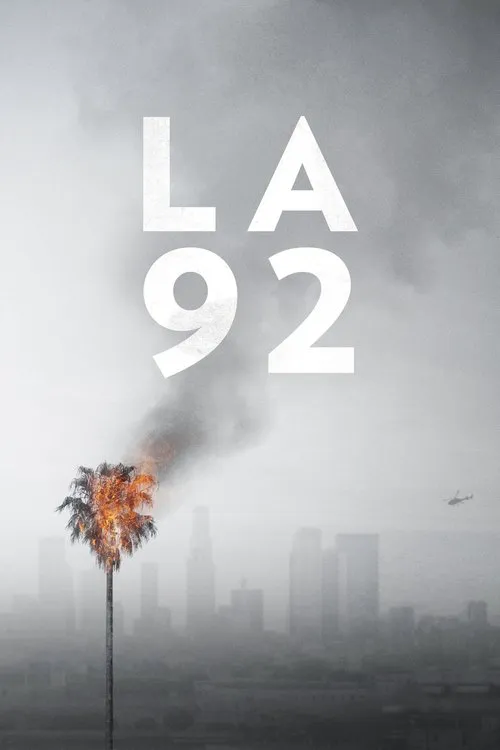LA 92

Plot
On April 29, 1992, the city of Los Angeles was thrust into chaos as the acquittal of four white police officers charged with the brutal beating of black motorist Rodney King sparked widespread outrage and protests. LA 92, a documentary directed by Daniel Lindsay and T.J. Martin, takes viewers on an immersive journey through the turbulent days following the verdict, offering a glimpse into the events that unfolded. The film begins with the dramatic footage of the Rodney King beating, captured by a bystander on April 3, 1991, as King led Los Angeles Police Department (LAPD) officers on a high-speed chase. The beating, which occurred while King was unarmed, left him severely injured and sparked outrage nationwide. The police officers responsible for the beating faced trial, and on April 29, 1992, the jury delivered a verdict of not guilty, sparking the widespread unrest that LA 92 chronicles. The documentary opens on a haunting note, with archival footage of the 1991 beating, setting the tone for the rest of the film. Lindsay and Martin weave together a tapestry of rarely seen footage, shot by both professional and amateur photographers, as the city teeters on the brink of chaos. Buildings burn, stores are looted, and the once-peaceful streets of Los Angeles become battlegrounds. The filmmakers delve into the complex social issues that fueled the unrest, including the strained relationships between law enforcement and the African American community, the economic disparities between rich and poor neighborhoods, and the deep-seated racial tensions that had been simmering for decades. Through interviews with key figures, including activists, community leaders, and ordinary citizens, LA 92 humanizes the faces behind the chaos, highlighting the personal struggles and the desire for justice that fueled the protests. As the city descends into chaos, the LAPD is shown scrambling to maintain order, deploying SWAT teams, and imposing curfews. The police response is marked by a heavy-handed approach, with officers using tear gas, rubber bullets, and batons to quell the crowds. The footage is harrowing, with protesters being beaten and arrested, and buildings reduced to ashes. Meanwhile, a separate narrative thread follows the response of local politicians, including Los Angeles Mayor Tom Bradley, who struggles to contain the situation and maintain order. The filmmakers also explore the role of the media in shaping the public's perception of the events unfolding in Los Angeles. News outlets, including CNN and local stations, broadcast live footage of the riots, amplifying the sense of chaos and fear. The documentary suggests that the media coverage, in some cases, exacerbated the situation, inadvertently contributing to the spread of panic and violence. One of the most striking aspects of LA 92 is its juxtaposition of the official narrative with the lived experiences of ordinary citizens. While the footage of burning buildings, looting, and rioting dominates the screen, the film also tells a story of resilience, courage, and humanity. LA residents, caught in the midst of the chaos, are shown offering aid to each other, helping to evacuate neighborhoods, and organizing community centers to provide relief and support. LA 92 culminates with the eventual deployment of the National Guard and the imposition of a state of emergency. The city begins to return to a semblance of normalcy, and the filmmakers reflect on the broader implications of the 1992 riots. While the immediate aftermath of the unrest was a time of great turmoil, the documentary suggests that the period also marked a turning point in the national conversation about police brutality, racial justice, and urban inequality. As the film concludes, LA 92 presents a somber reflection on the progress made in the years since the Rodney King beating. The beatings of countless others have made some of the same points as Rodney King's case in subsequent years.
Reviews
Recommendations




